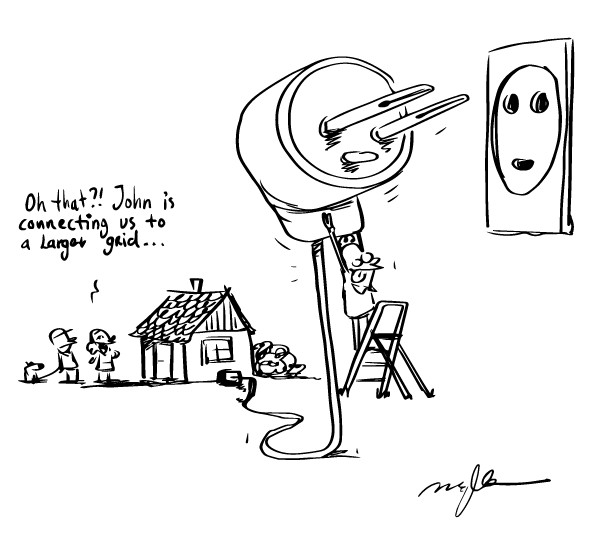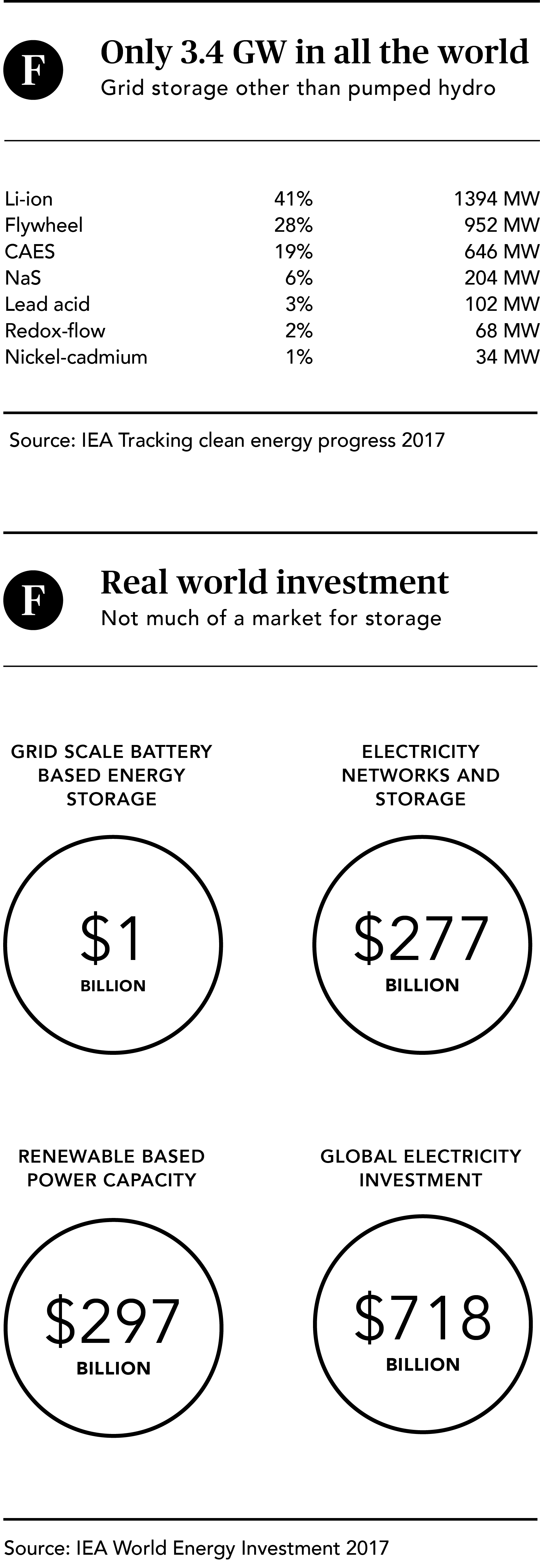Banter about batteries
Tesla boss Elon Musk was quick to join the Twitter storm that erupted after 40,000 customers were deprived of their electricity supply in South Australia during a heat wave in February this year. The system operator said it ordered the cut in supply to avert the risk of rolling blackouts which may have resulted from insufficient generating capacity. In a bout of Twitter exchanges after the event, Musk offered a giant 100 MW battery solution at a “pack cost” (excluding infrastructure) of $250 for each kilowatt hour of storage capacity, delivered within 100 days or it would be free of charge. The cost is likely to be closer to $500/kWh once shipping, construction and infrastructure are accounted for, estimates Carnegie Clean Energy, indicating a total investment of $50 million for 100 MWh of supply, far outside the price range a utility would typically countenance. The South Australia battery, which reportedly can provide 129 MWh for 80 minutes at its full 100 MW capacity, is to share the Hornsdale Windfarm’s grid infrastructure north of Jamestown. The wind farm of Siemens turbines will have a generating capacity of 315 MW when stage three, under construction, is complete. It is owned by Neoen, a French renewable energy project developer. Australia has other and cheaper options than battery banks for storing electricity, including 67,000 GWh of pumped hydro storage potential at 22,000 sites identified in a research project by the Australian National University. Using just 459 GWh of that potential, Australia can transition to 100% renewable energy within 20 years, according to lead researcher Andrew Blakers.

Battery challenge from wind
While Tesla has stolen most of the headlines in connection with Australia’s Hornsdale Wind Farm (previous story), the 100 MW stage two of the wind facility is setting out to prove that it, too, can provide grid stability services just as well as any battery. The Australian Energy Market Operator (AEMO) says that from October 2017 it will remotely control the 100 MW of wind turbines to allow them to provide frequency control as an ancillary service (FCAS) for the national electricity market. AEMO is partnering on the A$600,000 project with wind farm owner Neoen and the Australian Renewable Energy Agency. “If successful the trial will provide a critical proof of concept to the market and investors on the ability of wind farms to provide FCAS,” states AEMO. Wind farms already provide FCAS in Canada, the US and Europe.
Low cost pumped hydro storage
By using electricity to pump water to an upper reservoir and releasing it downhill through turbines as required, electricity can be stored in large quantities in a medium that is found in abundance. Pumped hydro storage capacity is influenced by the size of the reservoirs, the power of the flow and the head of water, which is determined by the difference in height between the lower and upper reservoirs. The round trip efficiency is dependent on the productivity of the pump, motor, and turbine as well as evaporation rates, but 70-85% pumped storage efficiency is commonly quoted.

The IEA view verbatim
“In many cases, it is unclear whether the business models in place are conducive to encouraging adequate investment in flexible electricity assets, raising concerns about electricity security. Continuous investment in flexible assets to ensure system adequacy during periods of peak demand and to help integrate higher shares of wind and solar PV capacity into the system is essential. The bulk of the flexibility that has been introduced so far has come from existing assets, primarily dispatchable capacity (mainly gas-fired plants andhydropower) and transmission interconnections. In 2016, the amount of new flexible generation capacity plus grid-scale storage that was sanctioned worldwide fell to around 130 GW, its lowest level in over a decade, reflecting weaker price signals for investment stemming from ongoing regulatory uncertainty and flawed market designs. For the first time ever, this capacity was virtually matched by the 125 GW of variable renewables capacity (solar PV and wind) commissioned in 2016, whose construction times are generally a lot shorter. The 6% increase in electricity network investments in 2016, with a larger role for digital technologies, supports grid modernisation and the ongoing integration of variable renewables. However, new policies and regulatory reforms are needed to strengthen market signals for investment in all forms of flexibility.”
Source: IEA 2017 World Energy Investment
ILLUSTRATION Anders Morgenthaler